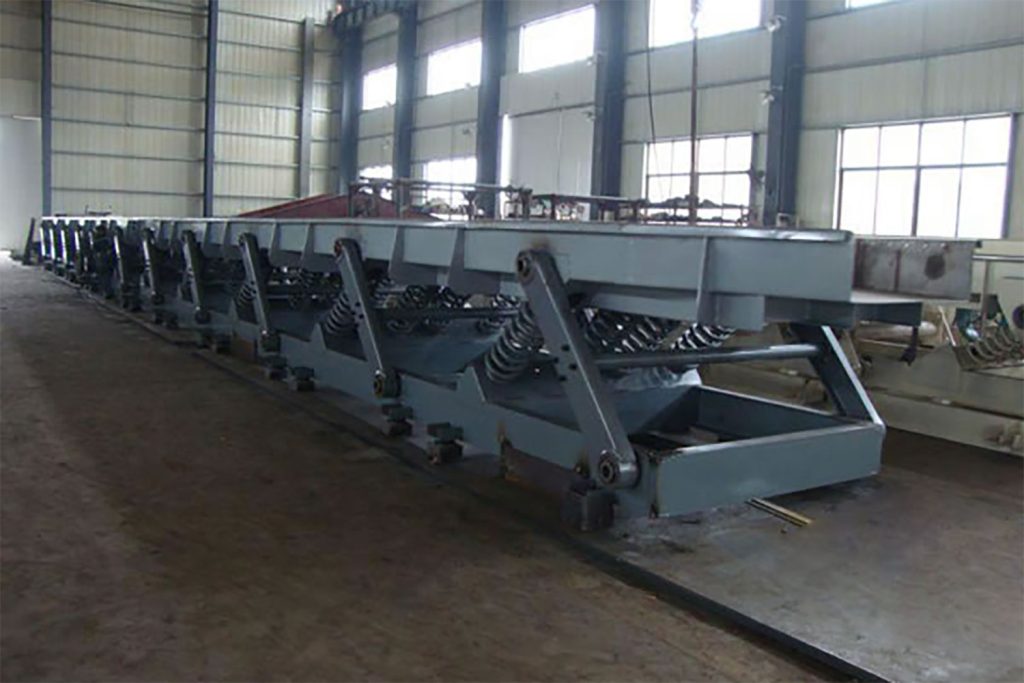Bulk material handling involves the transportation and storage of large quantities of solids, liquids, and gases. A variety of machines and systems are used to move bulk materials through facilities and processes, and vibration conveying has emerged as one of the most popular methods. This article will explore the principles of vibration conveying, its advantages and limitations, and how it fits into the bulk material handling field.
Principles of Vibration Conveying

Vibration conveying is a method of conveying bulk materials in which materials are moved along a vibratory conveyor path. The conveyor pan is designed to vibrate, shaking the particles and leading them toward the discharge point. Vibration conveyors rely on the principles of vibration to transport materials along the conveyor path. The conveyors are designed to operate in steady state conditions, with minimal vertical acceleration and low velocities.
Advantages of Vibration Conveying in Bulk Material Handling
- Gentle Product Handling: Vibration conveyors exert minimal force on products, which reduces the risk of damage to fragile products. Unlike other bulk material handling methods, vibration conveying is less likely to cause materials to break apart, fuel or particle separation, segregation, or demixing.
- Cost-Effective: Vibration conveyors use less energy, making them more cost-effective than other bulk material handling solutions such as pneumatic or hydraulic conveying.
- Continuous Operation: The continuous and steady-state operation of vibration conveyors make them ideal for handling high-capacity materials.
- Versatile: Vibration conveyors can handle a variety of materials, from fine powders to granules and even larger particles.
Limitations of Vibration Conveying
While vibration conveying is a popular method in bulk material handling, it does have some limitations that need to be considered:
- Distance limitations: Vibration conveyors are efficient when material needs to be moved short distances. Over longer distances, the efficiency of vibration conveying can decrease.
- Wear and Tear: Vibration conveyors have moving parts that are subject to wear and tear, and components such as helical springs and bearings may need to be replaced periodically. These replacement costs must be considered against the cost savings from using vibration conveying.
Applications of Vibration Conveying in Bulk Material Handling
Vibration conveying has become a popular choice in bulk material handling, due to its versatility and energy efficiency. Some key applications of vibration conveying include:
- Food & Beverage: Vibration conveying is gentle and consistent, making it ideal for handling food products such as grains, sugar, and other fine or friable materials that need to be transported without causing breakage or damage.
- Automotive: Vibration conveying is frequently used in the production of automobiles to move different parts and materials down a single assembly line.
- Chemical: Vibration conveying systems are well-suited for transporting fibers, acids, and other specialty items in the chemical industry.
- Mining: Vibration conveying can be used in underground mines, where space is a premium, or in open-pit mining operations where continuous, efficient transportation of materials is vital to the operation.
Comparison between Vibration Conveying and Other Bulk Material Handling Methods
| Method | Advantages | Limitations |
|---|---|---|
| Vibration Conveying | Gentle handling action, cost-effective, continuous operation, versatile | Distance limitations and wear and tear on equipment |
| Pneumatic Conveying | Fast, efficient, versatile | High operating costs, material degradation, noise pollution |
| Screw Conveying | Precise metering of material, low maintenance | Limited distance, potential of material sticking to the screw |
| Hydraulic Conveying | Fast and efficient, high throughput | High energy costs and usage, limited distance |
Final Words
Vibration conveying is a popular and efficient method of conveying bulk materials in various applications. When compared to other bulk material handling methods, vibration conveying is gentle on materials, versatile, and cost-effective. While it does have some limitations that need to be considered, vibration conveying is a highly effective solution for many applications, and its popularity continues to grow.
- Varelis, D. (2015). Vibratory Conveying. In Process Plants (pp. 71-83). Springer, Cham. https://doi.org/10.1007/978-3-319-16871-2_7
- Hao, M., Song, Y., Yang, R., & Xu, Y. (2021). Experimental investigation of the conveying capacity of a closed system vibration conveyor. Powder Technology, 377, 511-520. https://doi.org/10.1016/j.powtec.2020.10.036
- Gibson, M. A., & Sinnott, M. D. (2018). Bulk Solids Handling. In Chemical Engineering Design (pp. 729-744). Butterworth-Heinemann. https://doi.org/10.1016/B978-0-08-101095-0.00028-5
- McKenzie, J. F. (1977). Vibration Conveying and Processing Equipment. Chemical Engineering Progress, 73(12), 75-78.
- Schenck Process LLC. (n.d.). Vibration Conveying Technology. https://www.schenckprocess.com/us/products/vibratory-conveyors